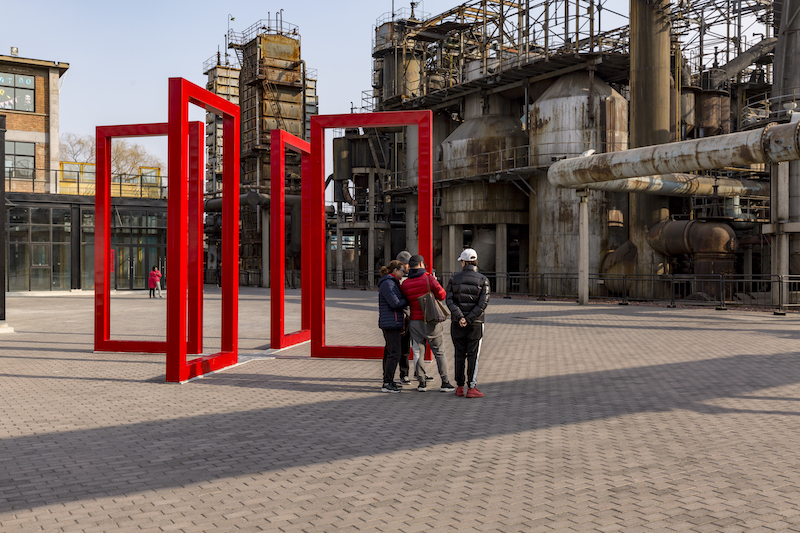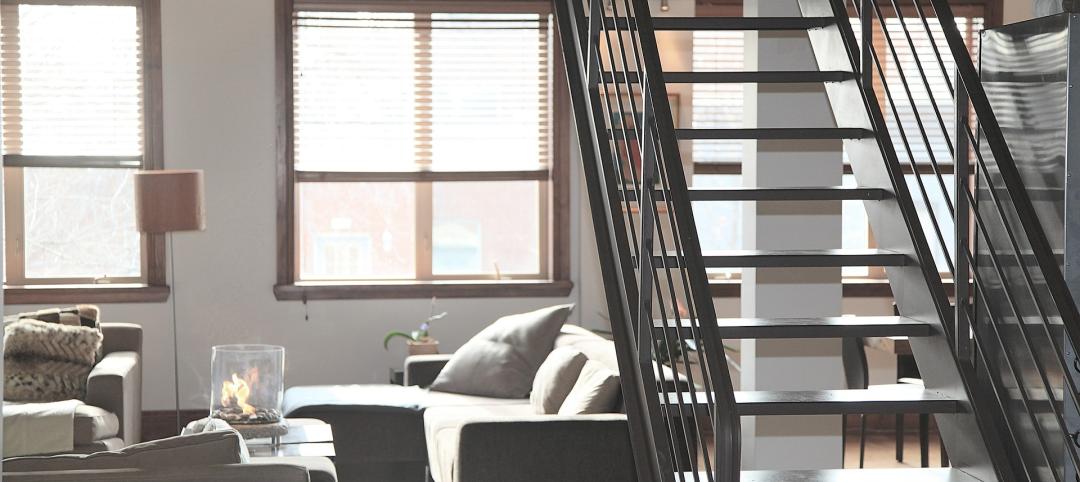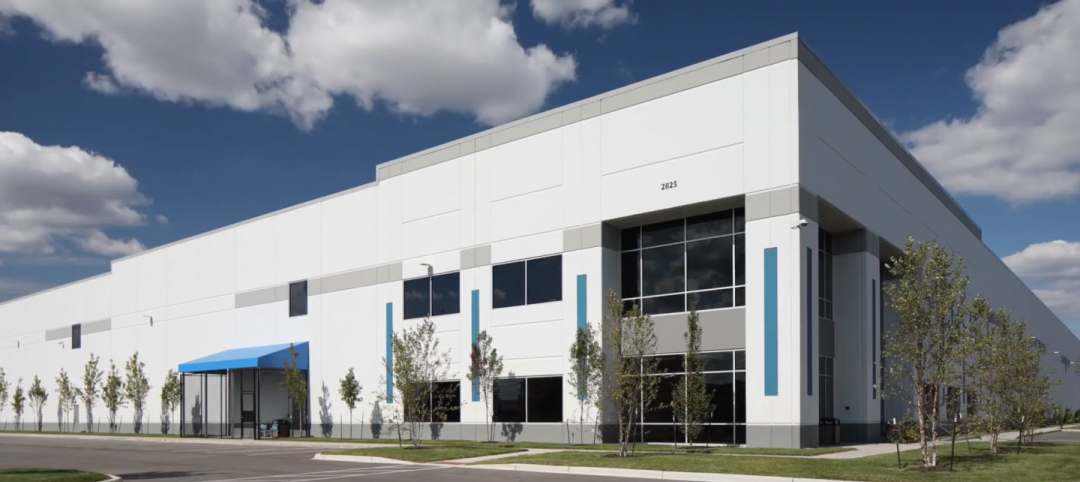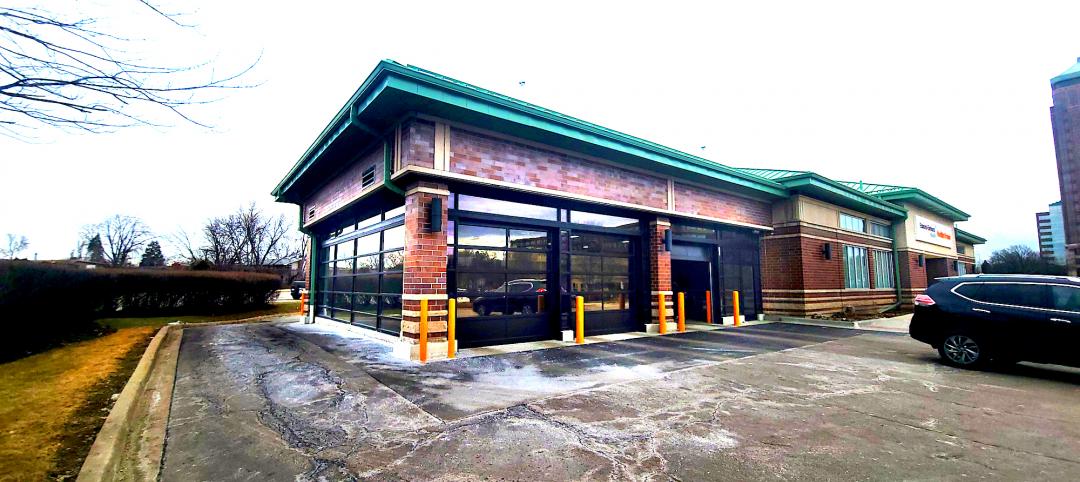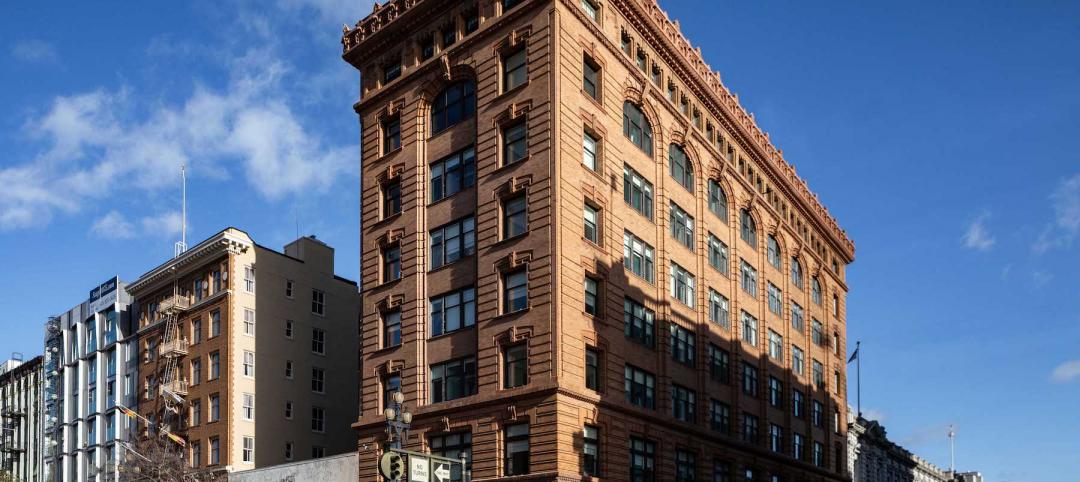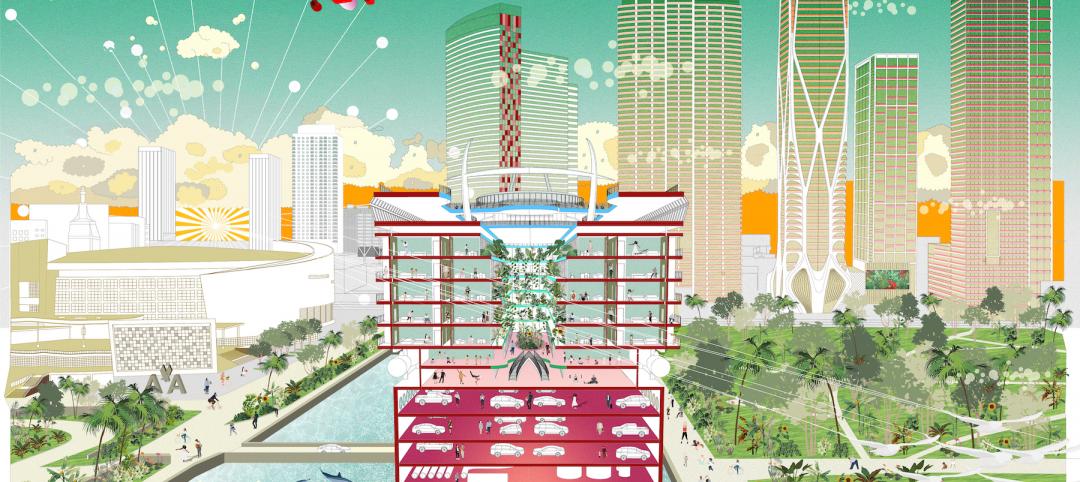In preparation for hosting the Summer Olympics in Beijing in 2008, the Chinese government had a slew of mega redevelopment projects in the works. One of these, dating back to 2004, called for tearing down a decommissioned, 1950s-era weapons factory to make way for new vertical construction that the city desperately needed.
But since the late 1990s, that 148-acre area, located in the northeast corner of Beijing, had emerged slowly but steadily as an artists’ enclave. And the uproar that ensued over the plan to demolish the buildings on that site led to an unexpected shift toward preservation that, a decade later, continues to pay dividends for this city, and is still evolving.
At the time when the Chinese government was considering demolition, “there wasn’t a lot of reverence for historical buildings,” recalls Michael Grove, a principal with Sasaki, the Boston-based design firm that developed the master plan for this site.
The outcry against razing the buildings, coming from local artists and cultural groups, struck a chord. But any alternative plan still needed to produce a steady revenue stream, provide a destination for China’s arts community, and preserve the area’s character.
SevenStar Group, a government-led consortium that owns the area’s land and manages the factory workers’ pension fund, joined forces with Baron Guy Ullens—a Belgian businessman, philanthropist, and art collector, who opened the first privately owned contemporary arts center in China—to commission Sasaki to come up with a vision for converting this area into an arts district.
“Ullens was taking a huge risk” opening his gallery, says Dennis Pieprz, a Sasaki principal. But while Ullens’ initial lease was for only seven years, “he was thinking well beyond that.”
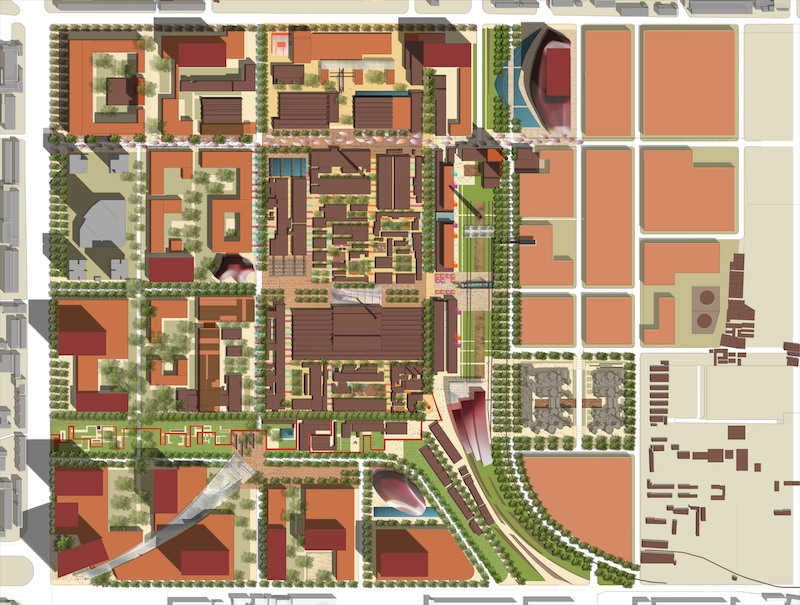
The 798 Arts Zone is wedged into 148 acres on the northeast corner of Beijing, where artists and creative tenants started gravitating to in the late 1990s. Image: Sasaki
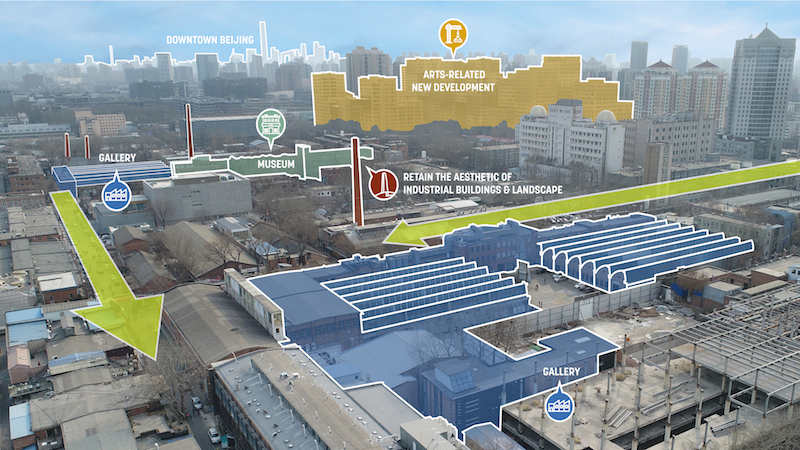
Sasaki's master plan called for preserving many of the factory's buildings for exhibit and event space, and retaining the area's industrial landscape. The presumption was that this redevelopment would lead to new construction around the zone's periphery. Image: Sasaki
Sasaki was “captivated” by the factory district’s architecture and infrastructure, which resembled the Bauhaus style. The firm worked with Urbis Development (an entity owned by Ullens) to catalog the existing buildings and identify those that would remain, “which was a lot,” says Pieprz. The plan would also suggest the development and installation of key cultural structures.
The 798 Arts Zone was born, named after the number on the building that was the first into which artists had migrated. Sasaki’s master plan strengthened the district’s connections with nearby transit stations, and established the guidelines for the buildings’ adaptive reuse.
The district’s factory buildings became museums (including the Ullens Center for Contemporary Arts), galleries, restaurants, and shops. The outside space around the buildings became settings for sculptures, as well as fashion and culture events. By January 2008, more than 400 cultural organizations from several countries had settled into this arts zone, according to contemporaneous news reports.
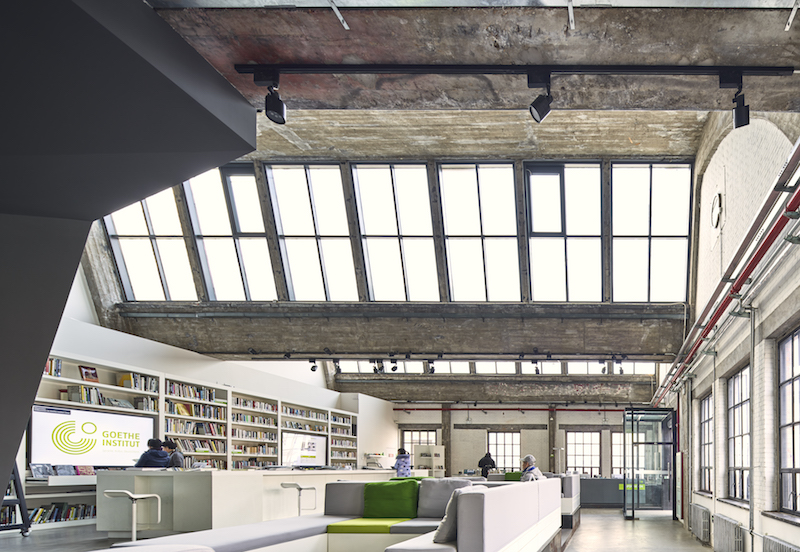
In 2015, the Goethe Institut China opened a new center in Beijing's 798 Art Zone. The event space is used for cultural and artistic exchanges, strengthening cultural ties between China and Germany. Image: Sasaki
The 798 Arts Zone is China’s third most-popular attraction, along with the Great Wall and the Forbidden City, with more than 3 million visitors annually. It was the recent recipient of the 2018 Pierre L’Enfant International Planning Excellence Award. SevenStar still features the arts district on its website, says Grove.
“It’s not static, and has evolved over time. Our plan was meant to be flexible, to allow for creativity.” Both he and Pieprz, though, are surprised at how closely 798’s development has followed Sasaki’s plan, especially since “we didn’t have a lot of interaction with the landowner,” says Grove.
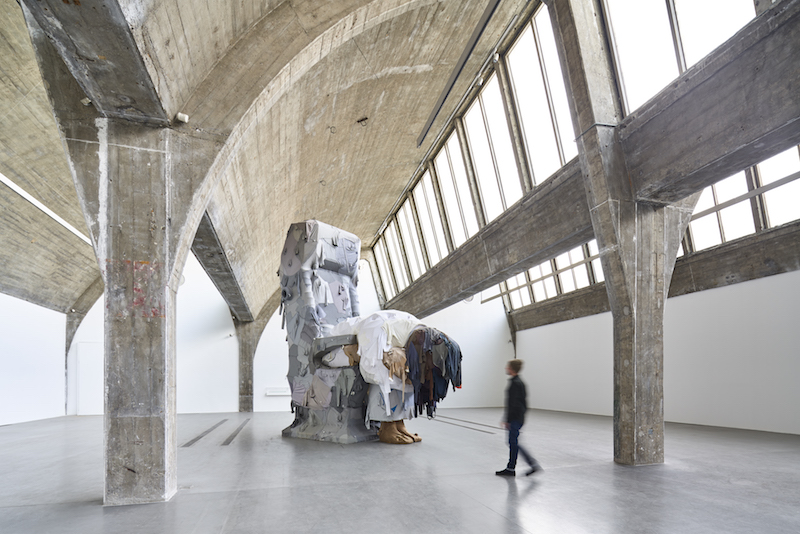
One of the striking art pieces on exhibit inside a converted factory at 798 Art Zone in Beijing. Image: Sasaki
New twists, possible additions
For the first time in several years, Grove returned to the district last February, and saw a number of new things:
•All of the plaza and public spaces that Sasaki inserted in its master plan “had been implemented”;
•There’s a ring of new development around the district, primarily low- and mid-rise office space for creative tenants such as ad agencies, media, fashion and software designers, and artists. “We wanted to avoid a sea of residential and office towers,” says Pieprz about what the master plan called for;
•One completely new building within the district is Audi’s Research & Development Center, which opened Feb. 1, 2013 inside the Audi China’s Building at 751-D Park. The 86,111-sf, six-story building has more than 300 employees and houses Audi’s labs and workshops for the Asia market. When it opened, this was Audi’s biggest overseas investment. “This building expands the district’s definition of art,” says Grove;
•An elevated walkway now meanders through the district. Grove says Sasaki’s master plan had called for a series of walkways, but the elevation surprised him. He speculates that this choice might relate to the success of New York City’s High Line.
798 Arts Zone still has a bohemian feel to it, and hosts myriad cultural events. The zone is the permanent home to the annual Beijing Queer Film Festival, despite China’s strict censorship laws. The international museum operator Pace has exhibit space in the district.
There’s always the fear, as with any popular venue, that 798 Arts Zone is becoming commercialized, gentrified, and high priced, especially when corporations like Audi, Uber, Volkswagon, and Canon have opened offices within its proximity.
But Grove and Pieprz agree that this kind of project, where incremental transformation occurs, is still rare. “Most projects are driven by scale, which is especially true in China,” says Pieprz.
The Sasaki execs also suggest that more changes could be in the offing. The firm’s master plan called for the eventual opening of a significant art school within the district. (Currently, there’s a small art school run by a Japanese tenant.) The plan also included a major performing arts center, and a railway that would run through a nearby park to the district. (The park, says Grove, has yet to be developed.)
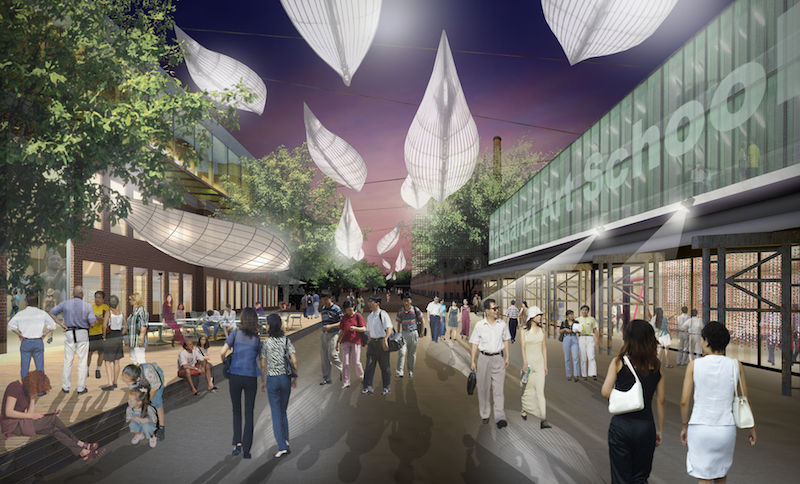
Sasaki's master plan envisioned the inclusion of a “significant” art school. Image: Sasaki
When Grove was in the district last February, a design director for 751, one of the converted factory buildings, approached him about pursuing future development.
“Our master plan was a strategy to create value,” says Pieprz, to which Grove adds “it’s an example of a flexible framework versus a mega project.”
Related Stories
Adaptive Reuse | Dec 9, 2022
What's old is new: Why you should consider adaptive reuse
While new construction allows for incredible levels of customization, there’s no denying that new buildings can have adverse impacts on the climate, budgets, schedules and even the cultural and historic fabrics of communities.
Mixed-Use | Dec 6, 2022
Houston developer plans to convert Kevin Roche-designed ConocoPhillips HQ to mixed-use destination
Houston-based Midway, a real estate investment, development, and management firm, plans to redevelop the former ConocoPhillips corporate headquarters site into a mixed-use destination called Watermark District at Woodcreek.
Multifamily Housing | Nov 29, 2022
Number of office-to-apartment conversion projects has jumped since start of pandemic
As remote work rose and demand for office space declined since the start of the Covid-19 pandemic, developers have found converting some offices to residential use to be an attractive option. Apartment conversions rose 25% in the two years since the start of the pandemic, with 28,000 new units converted from other property types, according to a report from RentCafe.
Multifamily Housing | Aug 17, 2022
California strip mall goes multifamily residential
Tiny Tim Plaza started out as a gas station and a dozen or so stores. Now it’s a thriving mixed-use community, minus the gas station.
Urban Planning | Jul 19, 2022
The EV charger station market is appealing to investors and developers, large and small
The latest entry, The StackCharge, is designed to make recharging time seem shorter.
Adaptive Reuse | May 18, 2022
An auto plant in Detroit to get a retread as mixed-use housing
Fisher 21 Lofts could be the largest minority-led redevelopment in the city’s history.
Industrial Facilities | Apr 1, 2022
Robust demand strains industrial space supply
JLL’s latest report finds a shift toward much larger buildings nearer urban centers, which fetch higher rents.
Healthcare Facilities | Mar 25, 2022
Health group converts bank building to drive-thru clinic
Edward-Elmhurst Health and JTS Architects had to get creative when turning an American Chartered Bank into a drive-thru clinic for outpatient testing and vaccinations.
Adaptive Reuse | Dec 16, 2021
An adaptive reuse of a historic building in San Francisco was worth the wait
A five-year-long project included extensive restoration.
Adaptive Reuse | Nov 1, 2021
CallisonRTKL explores converting decommissioned cruise ships for housing
The rapid increase in cruise ship decommissioning during the last 18 months has created a unique opportunity to innovate and adapt these large ships.


